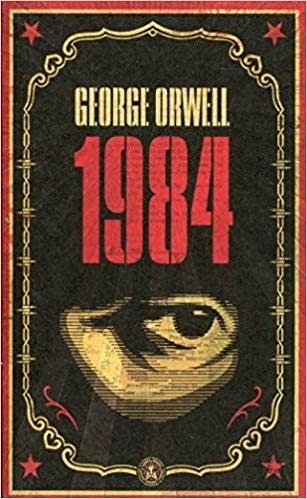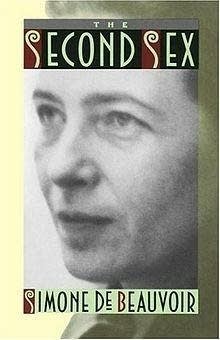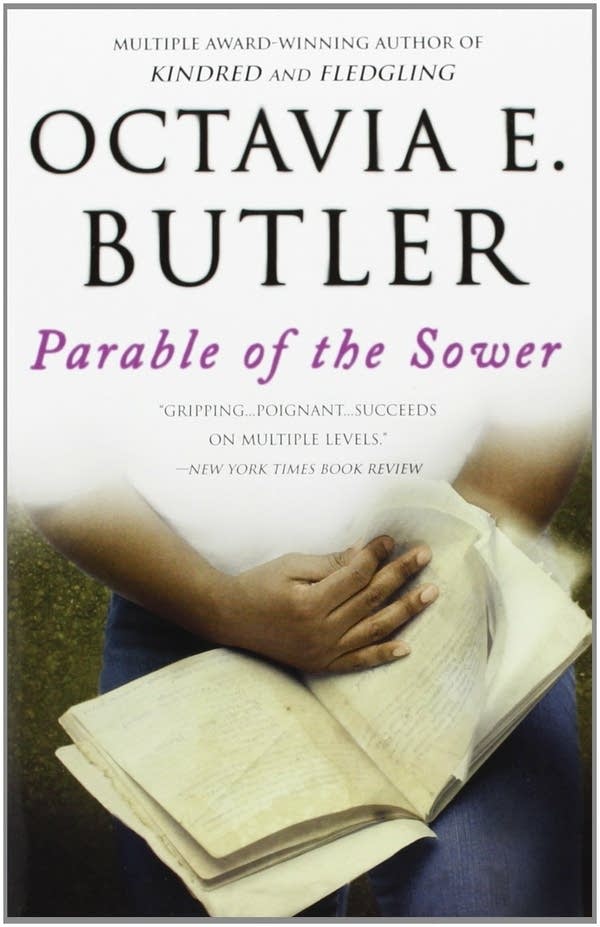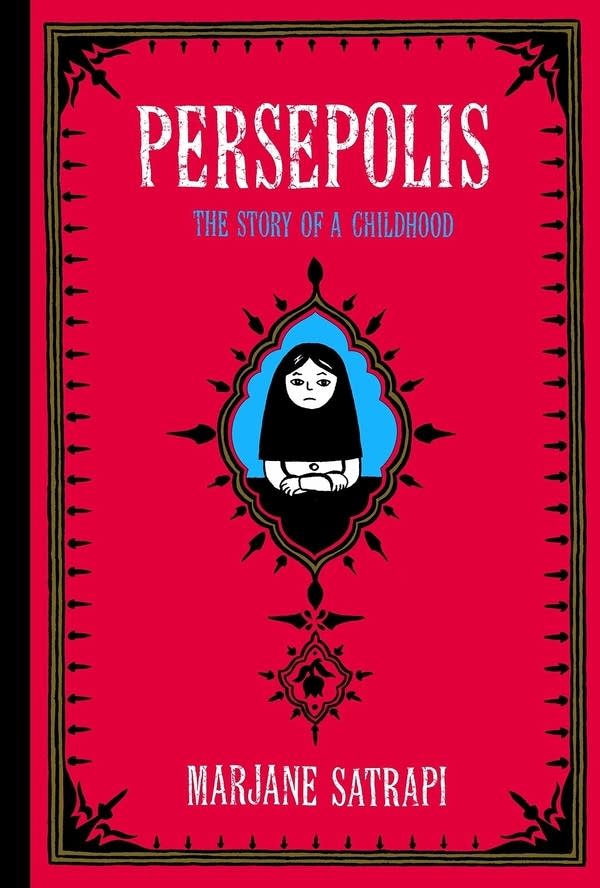Reader suggestions: Books we should teach in schools

Last year, the Duluth public school district pulled "To Kill a Mockingbird" and "The Adventures of Huckleberry Finn" from its list of books high school students are required to read. Administrators said they had gotten complaints about racist language in the books, and questions about their cultural appropriateness.
The decision sparked debate and launched a larger conversation about whether more books written by newer and more diverse authors should be included on the required reading lists.
MPR News asked readers what books they would recommend high school students be required to read. We've compiled a reading list based on their suggestions.
Editor's note: All of the book descriptions were written by the books' respective publisher.
Create a More Connected Minnesota
MPR News is your trusted resource for the news you need. With your support, MPR News brings accessible, courageous journalism and authentic conversation to everyone - free of paywalls and barriers. Your gift makes a difference.
"The Hate U Give" by Angie Thomas

Sixteen-year-old Starr Carter moves between two worlds: the poor neighborhood where she lives and the fancy suburban prep school she attends. The uneasy balance between these worlds is shattered when Starr witnesses the fatal shooting of her childhood best friend, Khalil, at the hands of a police officer. Khalil was unarmed.
Soon afterward, his death is a national headline. Some are calling him a thug, maybe even a drug dealer and a gang-banger. Protesters are taking to the streets in Khalil's name. Some cops and the local drug lord try to intimidate Starr and her family. What everyone wants to know is: What really went down that night? And the only person alive who can answer that is Starr.
But what Starr does — or does not — say could upend her community. It could also endanger her life.
"Nineteen Eighty-Four" by George Orwell

One of Britain's most popular novels, George Orwell's "Nineteen Eighty-Four" is set in a society terrorized by a totalitarian ideology propagated by The Party.
Winston Smith works for the Ministry of Truth in London, chief city of Airstrip One. Big Brother stares out from every poster, the Thought Police uncover every act of betrayal. When Winston finds love with Julia, he discovers that life does not have to be dull and deadening, and awakens to new possibilities. Despite the police helicopters that hover and circle overhead, Winston and Julia begin to question the Party; they are drawn towards conspiracy. Yet Big Brother will not tolerate dissent — even in the mind. For those with original thoughts they invented Room 101.
"The Absolutely True Diary of a Part-Time Indian" by Sherman Alexie

Bestselling author Sherman Alexie tells the story of Junior, a budding cartoonist growing up on the Spokane Indian Reservation. Determined to take his future into his own hands, Junior leaves his troubled school on the rez to attend an all-white farm town high school where the only other Indian is the school mascot.
"The Absolutely True Diary of a Part-Time Indian," which is based on the author's own experiences, coupled with poignant drawings by Ellen Forney that reflect the character's art, chronicles the contemporary adolescence of one Native American boy as he attempts to break away from the life he was destined to live.
"The Second Sex" by Simone de Beauvoir

Simone de Beauvoir's masterpiece weaves together history, philosophy, economics, biology and a host of other disciplines to analyze the Western notion of "woman" and to explore the power of sexuality.
Drawing on extensive interviews with women of every age and station of life, masterfully synthesizing research about women's bodies and psyches as well as their historic and economic roles, "The Second Sex" is an encyclopedic and cogently argued document about inequality and enforced "otherness."
A vital and life-changing work that has dramatically revised the way women talk and think about themselves, Beauvoir's magisterial treatise continues to provoke and inspire.
"The Color Purple" by Alice Walker

This is the story of two sisters — one a missionary in Africa and the other a child wife living in the South — who sustain their loyalty to and trust in each other across time, distance and silence. Beautifully imagined and deeply compassionate, this classic novel of American literature is rich with passion, pain, inspiration and an indomitable love of life.
Alice Walker is an internationally celebrated writer, poet, and activist whose books include seven novels, four collections of short stories, four children's books and volumes of essays and poetry. She won the Pulitzer Prize in Fiction in 1983 and the National Book Award.
"Parable of the Sower" by Octavia E. Butler

When global climate change and economic crises lead to social chaos in the early 2020s, California becomes full of dangers, from pervasive water shortage to masses of vagabonds who will do anything to live to see another day.
Fifteen-year-old Lauren Olamina lives inside a gated community with her preacher father, family and neighbors, sheltered from the surrounding anarchy. In a society where any vulnerability is a risk, she suffers from hyperempathy, a debilitating sensitivity to others' emotions.
Precocious and clear-eyed, Lauren must make her voice heard in order to protect her loved ones from the imminent disasters her small community stubbornly ignores. But what begins as a fight for survival soon leads to something much more: the birth of a new faith, and a startling vision of human destiny.
"My Ishmael" by Daniel Quinn

Winner of the Turner Tomorrow Fellowship, Daniel Quinn's "Ishmael" is a bestseller and a testament for a burgeoning spiritual movement.
When Ishmael places an advertisement for pupils with "an earnest desire to save the world," he does not expect a child to answer him. But twelve-year-old Julie Gerchak is undaunted by Ishmael's reluctance to teach someone so young, and convinces him to take her on as his next student.
Ishmael knows he can't apply the same strategies with Julie that he used with his first pupil, Alan Lomax — nor can he hope for the same outcome. But young Julie proves that she is ready to forge her own spiritual path — and arrive at her own destination.
And when the time comes to choose a pupil to carry out his greatest mission yet, Ishmael makes a daring decision — a choice that just might change the world.
"Between the World and Me" by Ta-Nehisi Coates

In a profound work that pivots from the biggest questions about American history and ideals to the most intimate concerns of a father for his son, Ta-Nehisi Coates offers a powerful new framework for understanding our nation's history and current crisis: Americans have built an empire on the idea of "race," a falsehood that damages us all but falls most heavily on the bodies of black women and men — bodies exploited through slavery and segregation, and, today, threatened, locked up and murdered out of all proportion.
What is it like to inhabit a black body and find a way to live within it? And how can we all honestly reckon with this fraught history and free ourselves from its burden?
"Between the World and Me" is Ta-Nehisi Coates' attempt to answer these questions in a letter to his adolescent son.
Coates shares with his son — and readers — the story of his awakening to the truth about his place in the world through a series of revelatory experiences, from Howard University to Civil War battlefields, from the South Side of Chicago to Paris, from his childhood home to the living rooms of mothers whose children's lives were taken as American plunder.
"Between the World and Me" clearly illuminates the past, bracingly confronts our present, and offers a transcendent vision for a way forward.
"Invisible Man" by Ralph Ellison

A first novel by an unknown writer, "Invisible Man" remained on the bestseller list for 16 weeks, won the National Book Award for fiction and established Ralph Ellison as one of the key writers of the century.
The nameless narrator of the novel describes growing up in a black community in the South; attending a college from which he is expelled; moving to New York and becoming the chief spokesman of the Harlem branch of "the Brotherhood"; and retreating amid violence and confusion to the basement lair of the Invisible Man he imagines himself to be.
The book is a passionate and witty tour de force of style, strongly influenced by T.S. Eliot's "The Waste Land," Joyce and Dostoevsky.

"Last Exit to Brooklyn" by Hubert Selby
"Last Exit to Brooklyn" remains undiminished in its awesome power and magnitude as the novel that first showed us the fierce, primal rage seething in America's cities.
Selby brings out the dope addicts, hoodlums, prostitutes, workers and thieves brawling in the back alleys of Brooklyn. This explosive bestseller has come to be regarded as a classic of modern American writing.
"The Fire Next Time" by James Baldwin

A national bestseller when it first appeared in 1963, "The Fire Next Time" galvanized the nation and gave passionate voice to the emerging civil rights movement.
At once a powerful evocation of James Baldwin's early life in Harlem and a disturbing examination of the consequences of racial injustice, the book is an intensely personal and provocative document.
It consists of two "letters," written on the occasion of the centennial of the Emancipation Proclamation, that exhort Americans, both black and white, to attack the terrible legacy of racism.
Described by The New York Times Book Review as "sermon, ultimatum, confession, deposition, testament, and chronicle, all presented in searing, brilliant prose," "The Fire Next Time" stands as a classic of our literature.
"I Know Why The Caged Bird Sings" by Maya Angelou

Here is a book as joyous and painful, as mysterious and memorable, as childhood itself. "I Know Why the Caged Bird Sings" captures the longing of lonely children, the brute insult of bigotry, and the wonder of words that can make the world right. Maya Angelou's debut memoir is a modern American classic beloved worldwide.
Sent by their mother to live with their devout, self-sufficient grandmother in a small Southern town, Maya and her brother, Bailey, endure the ache of abandonment and the prejudice of the local "powhitetrash."
At eight years old and back at her mother's side in St. Louis, Maya is attacked by a man many times her age — and has to live with the consequences for a lifetime.
Years later, in San Francisco, Maya learns that love for herself, the kindness of others, her own strong spirit, and the ideas of great authors ("I met and fell in love with William Shakespeare") will allow her to be free instead of imprisoned.
"Stranger in a Strange Land" by Robert A. Heinlein

A human raised on Mars, Valentine Michael Smith has just arrived on planet Earth. Among his people for the first time, he struggles to understand the social mores and prejudices of human nature that are so alien to him, while his own "psi" powers — including telepathy, clairvoyance, telekenesis, and teleportation — make him a type of messiah figure among humans.
"Stranger in a Strange Land" grew from a cult favorite to a bestseller to a classic in a few short years. The story of the man from Mars who taught humankind grokking and water-sharing — and love — it is Robert A. Heinlein's masterpiece.
"Persepolis" by Marjane Satrapi

In powerful black-and-white comic strip images, Satrapi tells the story of her life in Tehran from ages 6 to 14, years that saw the overthrow of the Shah's regime; the triumph of the Islamic Revolution; and the devastating effects of war with Iraq. The intelligent and outspoken only child of committed Marxists and the great-granddaughter of one of Iran's last emperors, Marjane bears witness to a childhood uniquely entwined with the history of her country.
"Persepolis" paints an unforgettable portrait of daily life in Iran and of the bewildering contradictions between home life and public life. Marjane's child's-eye view of dethroned emperors, state-sanctioned whippings and heroes of the revolution allows us to learn as she does the history of this fascinating country and of her own extraordinary family.
Intensely personal, profoundly political and wholly original, "Persepolis" is at once a story of growing up and a reminder of the human cost of war and political repression. It shows how we carry on, with laughter and tears, in the face of absurdity. And, finally, it introduces us to an irresistible little girl with whom we cannot help but fall in love.
"Bronx Masquerade" by Nikki Grimes

When Wesley Boone writes a poem for his high school English class, some of his classmates clamor to read their poems aloud too. Soon they're having weekly poetry sessions and, one by one, the 18 students are opening up and taking on the risky challenge of self-revelation.
There's Lupe Alvarin, desperate to have a baby so she will feel loved.
Raynard Patterson, hiding a secret behind his silence.
Porscha Johnson, needing an outlet for her anger after her mother OD's.
Through the poetry they share and narratives in which they reveal their most intimate thoughts about themselves and one another, their words and lives show what lies beneath the skin, behind the eyes, beyond the masquerade.
"The God of Small Things" by Arundhati Roy

Compared favorably to the works of Faulkner and Dickens, Arundhati Roy's modern classic is equal parts powerful family saga, forbidden love story, and piercing political drama.
The seven-year-old twins Estha and Rahel see their world shaken irrevocably by the arrival of their beautiful young cousin, Sophie. It is an event that will lead to an illicit liaison and tragedies accidental and intentional, exposing "big things [that] lurk unsaid" in a country drifting dangerously toward unrest.
Lush, lyrical, and unnerving, "The God of Small Things" is an award-winning landmark that started for its author an esteemed career of fiction and political commentary that continues unabated.
"The Jungle" by Upton Sinclair

Jurgis Rudkus, a young Lithuanian immigrant in search of a better life, faces instead an epic struggle for survival. His story of factory life in Chicago in the early 20th century is a saga of barbarous working conditions, crushing poverty, crime, disease and despair.
Upton Sinclair's vivid depiction of the horrors of Chicago's stockyards and slaughterhouses aroused such public indignation that a government investigation was called, eventually resulting in the passage of pure food laws.
More than a hundred years later, "The Jungle" continues to pack the same emotional power it did when it was first published.
"The Chosen" by Chaim Potok

It's the spring of 1944 and 15-year-olds Reuven Malter and Danny Saunders have lived five blocks apart all their lives. But they've never met, not until the day an accident during a softball game sparks an unlikely friendship.
Soon these two boys — one expected to become a Hasidic rebbe, the other at ease with secular America — are drawn into one another's worlds despite one father's strong opposition.
Set against the backdrop of World War II and the creation of the state of Israel, "The Chosen" is a poignant novel about transformation and tradition, growing up and growing wise, and finding yourself — even if that might mean leaving your community.

"The Fountainhead" by Ayn Rand
This modern classic is the story of intransigent young architect Howard Roark, whose integrity was as unyielding as granite; of Dominique Francon, the exquisitely beautiful woman who loved Roark passionately, but married his worst enemy; and of the fanatic denunciation unleashed by an enraged society against a great creator.
As fresh today as it was then, Rand's provocative novel presents one of the most challenging ideas in all of fiction: That man's ego is the fountainhead of human progress.
"A Good Time for the Truth: Race in Minnesota" edited by Sun Yung Shin

In this provocative book, 16 of Minnesota's best writers provide a range of perspectives on what it is like to live as a person of color in Minnesota. They give readers a splendid gift: the gift of touching another human being's inner reality, behind masks and veils and politeness.
They bring us generously into experiences that we must understand if we are to come together in real relationships. Minnesota communities struggle with some of the nation's worst racial disparities.
As its authors confront and consider the realities that lie beneath the numbers, this book provides an important tool to those who want to be part of closing those gaps.
"Beloved" by Toni Morrison

Sethe was born a slave and escaped to Ohio, but 18 years later she is still not free. She has borne the unthinkable and not gone mad, yet she is still held captive by memories of Sweet Home, the beautiful farm where so many hideous things happened.
Meanwhile, Sethe's house has long been troubled by the angry, destructive ghost of her baby, who died nameless and whose tombstone is engraved with a single word: Beloved.
Sethe works at beating back the past, but it makes itself heard and felt incessantly in her memory and in the lives of those around her. When a mysterious teenage girl arrives, calling herself Beloved, Sethe's terrible secret explodes into the present.
"Citizen" by Claudia Rankine

Claudia Rankine's bold new book recounts mounting racial aggressions in ongoing encounters in 21st century daily life and in the media.
Some of these encounters are slights, seemingly slips of the tongue, and some are intentional offensives in the classroom, at the supermarket, at home, on the tennis court with Serena Williams and the soccer field with Zinedine Zidane, online, on TV — everywhere, all the time.
The accumulative stresses come to bear on a person's ability to speak, perform, and stay alive. Our addressability is tied to the state of our belonging, Rankine argues, as are our assumptions and expectations of citizenship.
In essay, image, and poetry, "Citizen" is a powerful testament to the individual and collective effects of racism in our contemporary, often named "post-race" society.